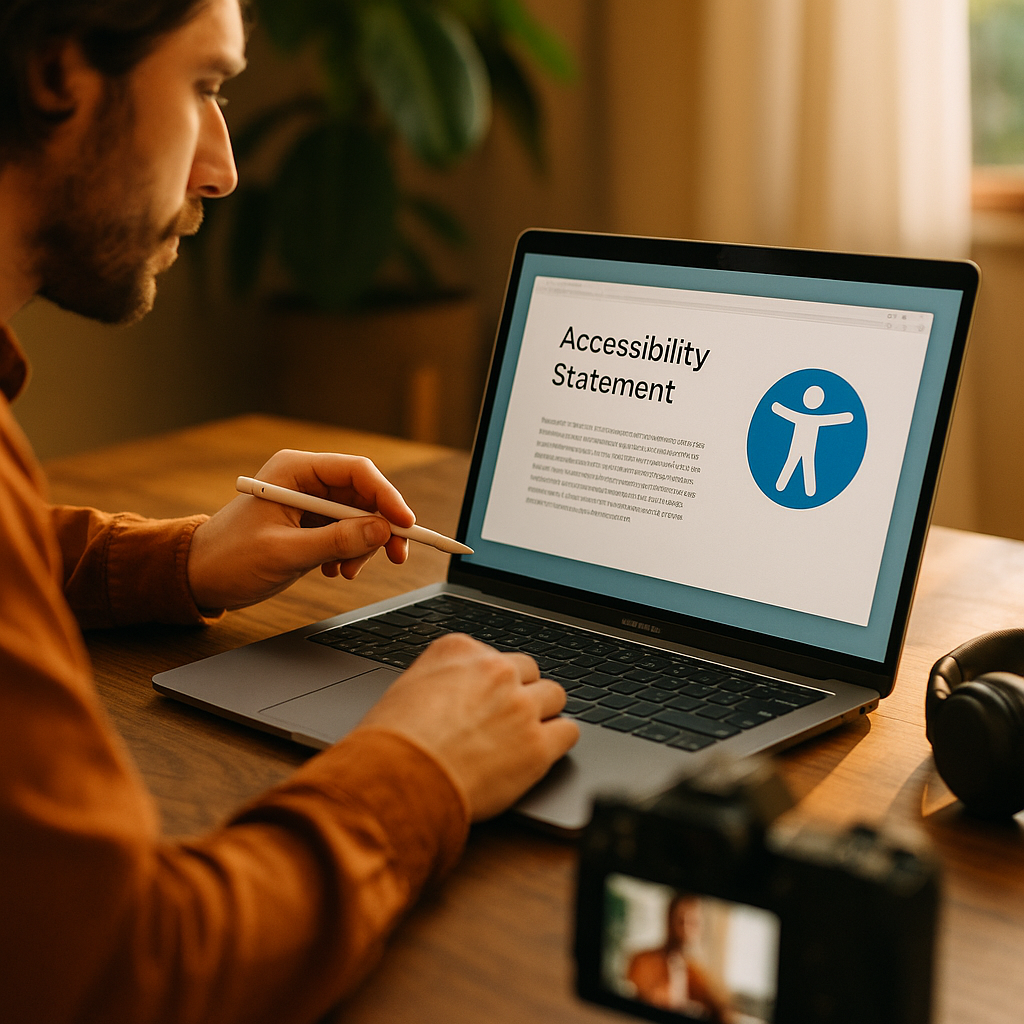As digital creators expand their reach, accessibility disclosures in creator content have become crucial for transparency and inclusivity. Knowing how and why to present this information is vital for audience trust and legal compliance. In this comprehensive guide, discover how to communicate accessibility features and limitations clearly—and why your approach matters more than ever in 2025.
The Importance of Accessibility Disclosures for Content Creators
Accessibility transparency is a cornerstone of responsible digital creation. Disclosures make it clear which features, accommodations, or limitations exist in your content—ensuring users with disabilities know what to expect. In 2025, audiences recognize and reward creators who prioritize openness, while regulators increasingly expect accessibility standards to be met across platforms.
Recent data from the Global Accessibility Awareness Survey shows that 67% of users feel more loyal to creators who openly discuss accessibility accommodations. Clear disclosures foster trust, deepen engagement, and encourage a broader, more diverse audience to interact with your work.
Best Practices for Accessibility Information in Creator Content
Integrating accessibility disclosures effectively isn’t just about checking a box; it’s about setting expectations honestly and helpfully. Here are actionable steps for content creators in 2025:
- Be Specific: State which accessibility features are present, such as captions, transcripts, or alternative text.
- Address Limitations: If certain features (like sign language interpretation) are not available, clarify why and when they may be added.
- Use Plain Language: Craft disclosures in everyday language that’s easy to understand for all users.
- Maintain Visibility: Place disclosures in obvious locations—like video descriptions, pinned comments, or introductory slides.
- Update Regularly: Reflect improvements or changes in your accessibility features as your content evolves.
Documenting your efforts transparently demonstrates ethical commitment and helps you stay compliant with emerging digital accessibility laws worldwide.
How to Write Effective Accessibility Disclosures
Effective accessibility statements should be direct, concise, and empathetic. Use the following framework to craft your message:
-
Identify Supported Features:
For example: “Captions and image descriptions are provided in all videos.”
-
State Limitations:
For instance: “Currently, sign language interpretation is unavailable, but we’re working to introduce this feature.”
-
Include Contact Information:
Invite feedback with a line like, “For additional accessibility requests or feedback, please contact: [your email or social handle].”
Empathize with your audience—demonstrate that you understand accessibility needs and are committed to continuous improvement. In 2025, many creators even release short accessibility statements on their websites or as standalone posts to further support their claims.
Legal Considerations and Platform Policies in 2025
Accessibility legislation is evolving. In 2025, major content distribution platforms—such as YouTube, TikTok, and Instagram—have integrated new features and mandatory fields for accessibility disclosures. Failure to comply can result in penalties, reduced account visibility, or loss of monetization privileges.
Here are some important considerations:
- Platform Requirements: Many platforms now require specific accessibility fields or statements before your content goes live.
- Regional Laws: Laws like the European Accessibility Act and new North American digital regulations compel creators to inform users of accessibility features—and enforce penalties for non-compliance.
- Automation Tools: Leverage AI-driven accessibility checkers integrated into creator platforms to ensure your content aligns with current standards.
Even independent creators should stay informed about legal updates to avoid inadvertent violations that could damage their reputation or business.
Improving Accessibility Disclosures Based on User Feedback
The best disclosures evolve through audience input. Embedding a simple feedback option—like a comment, email link, or in-app prompt—gives users a voice and uncovers real-world accessibility barriers. A 2025 survey by Digital Inclusion Insights found that creators who respond to feedback and update their disclosures see a 40% boost in favorable audience sentiment.
Best practices for incorporating feedback include:
- Monitoring comments and questions about accessibility regularly
- Responding promptly to suggestions or reports of issues
- Publishing updates or changelogs when accessibility features are improved
- Thanking users publicly for their input, which builds a supportive community
This approach not only strengthens engagement but also ensures your disclosures remain accurate and actionable.
The Business Benefits of Strong Accessibility Disclosures
Embracing accessibility transparency isn’t just a moral imperative—it’s a smart business strategy. In 2025, brands and advertisers are increasingly evaluating partnerships based on a creator’s track record for accessibility and inclusion. Clear, detailed disclosures can:
- Expand your potential audience, including users with disabilities
- Attract partnerships with brands prioritizing social responsibility
- Boost your reputation and foster long-term viewer loyalty
- Reduce legal risks and increase compliance confidence
Transparent accessibility practices demonstrate professionalism and signal your commitment to providing content for everyone.
In summary, effective accessibility disclosures in creator content build trust, ensure compliance, and open doors to wider audiences. Commit to transparent disclosures, welcome feedback, and refine your practices—ensuring everyone has an equal opportunity to benefit from your creative work.
FAQs About Accessibility Disclosures in Creator Content
-
What should an accessibility disclosure include?
A robust disclosure identifies what accessibility features your content provides (like captions or alt text), notes any current limitations, and offers contact details for further questions or requests.
-
Where should I place accessibility disclosures?
Include disclosures in video descriptions, pinned comments, introductory content slides, or as a dedicated section on your website or platform profile.
-
Why do accessibility disclosures matter in 2025?
With increasing regulatory standards and audience awareness, disclosures demonstrate your commitment to inclusion, protect you legally, and help attract wider, more loyal viewership.
-
How often should I update my accessibility disclosure?
Review and update disclosures whenever your content or its accessibility features change, or if you receive relevant feedback from your audience.
-
Are accessibility disclosures mandatory for all creators?
In 2025, most major platforms require some level of disclosure, and regional laws may apply depending on your audience and content type. Always check the latest requirements for your platforms and region.
